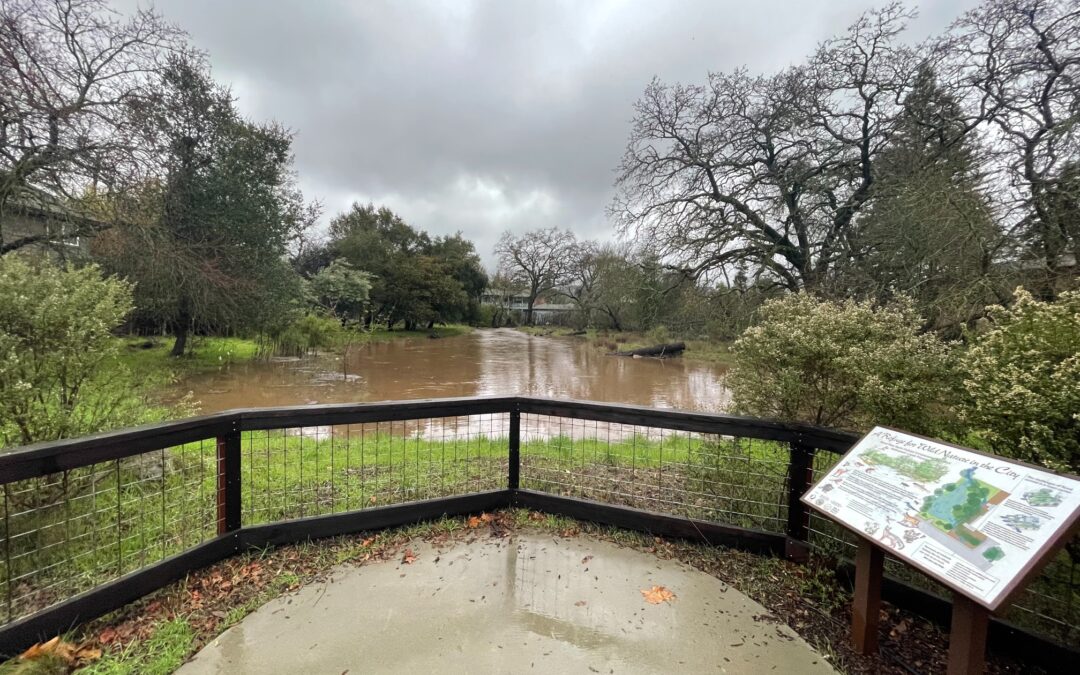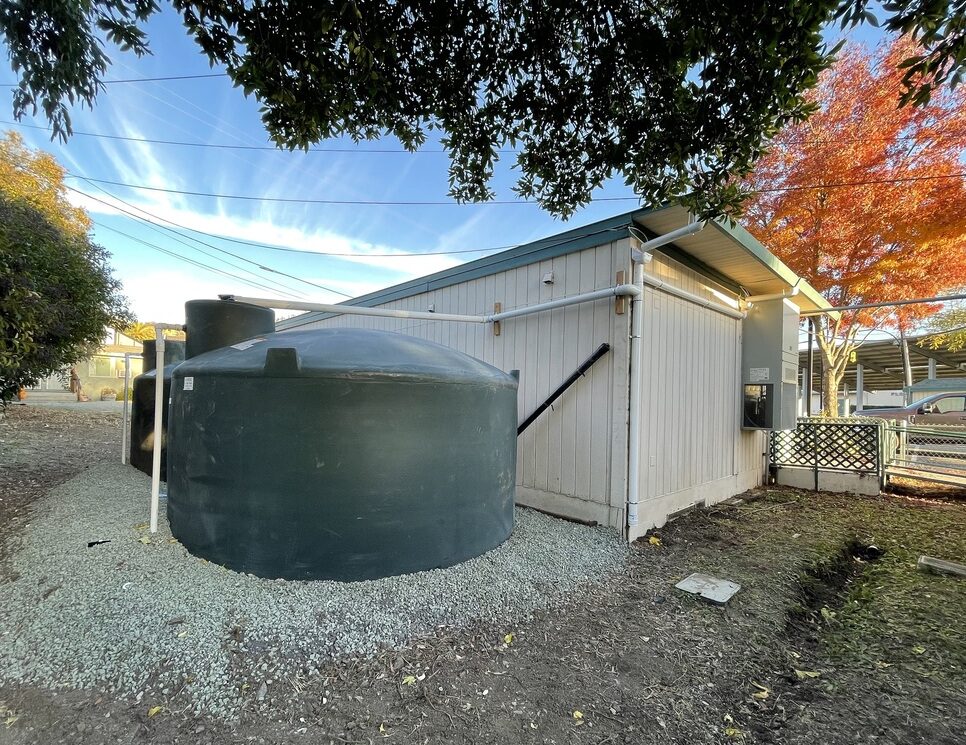Nathanson Creek Detention Basin after the storm on January 9, 2023.
Good news as a result of these recent storms! Given the current trajectory, we may be coming out of the drought here in Sonoma County.
Sonoma Ecology Center Senior Scientist, Steven Lee, is optimistic about our water supplies. “We are now over 25 inches since the start of the water year (October 1st) and well on our way, hopefully, to seeing near-average rainfall this year. The graph below shows the data from our rain gauge as of January 9th when 3.27 inches of rain was recorded from the gauge” he says. Average rainfall for Sonoma Valley is around 30 inches per year, though it is a bit higher in Glen Ellen where Lee’s rain gauge is located.

Graph generated by Sonoma Ecology Center Senior Scientist Steven Lee’s rain gauge, located in Glen Ellen.
Sonoma Water provides real-time water level data for reservoirs in the County’s water supply system. Graphs of those data are available on their website. “Lake Pillsbury and Lake Mendocino are now full enough for this time of year that the water district is starting to think about releasing water for flood management purposes. Lake Sonoma still has a ways to go. Given the trajectory, however, and considering the optimistic 10-day forecast, it seems that we will surpass average water level conditions for this important source of our domestic water supply. Should we surpass and remain above average conditions by the end of the rainy season, I believe that would bring us out of drought conditions here in Sonoma County. All very good news” continues Lee.
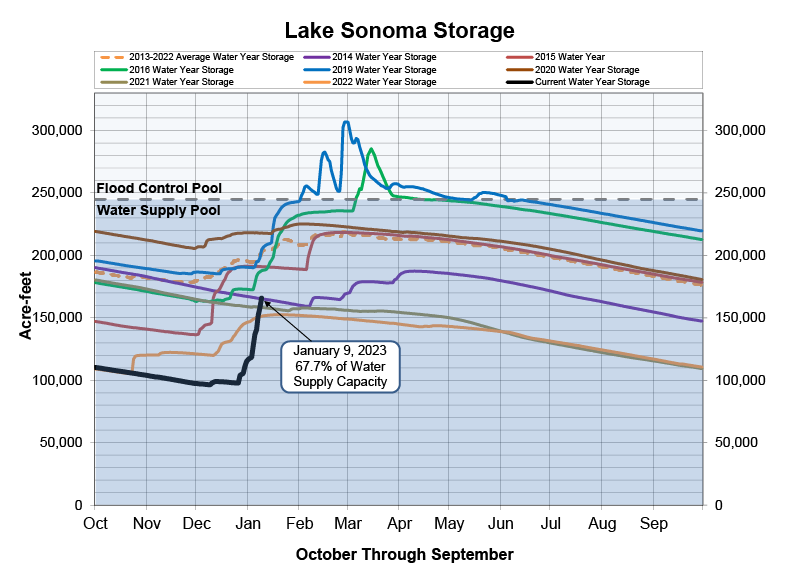
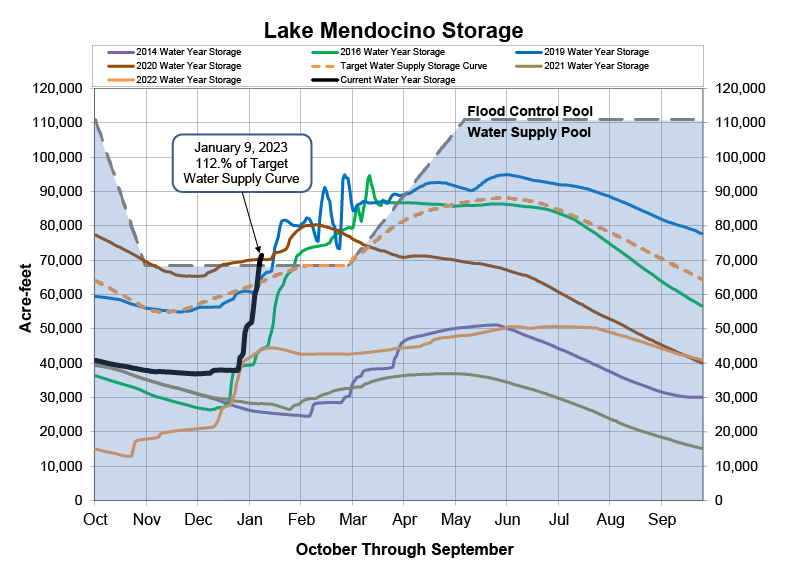
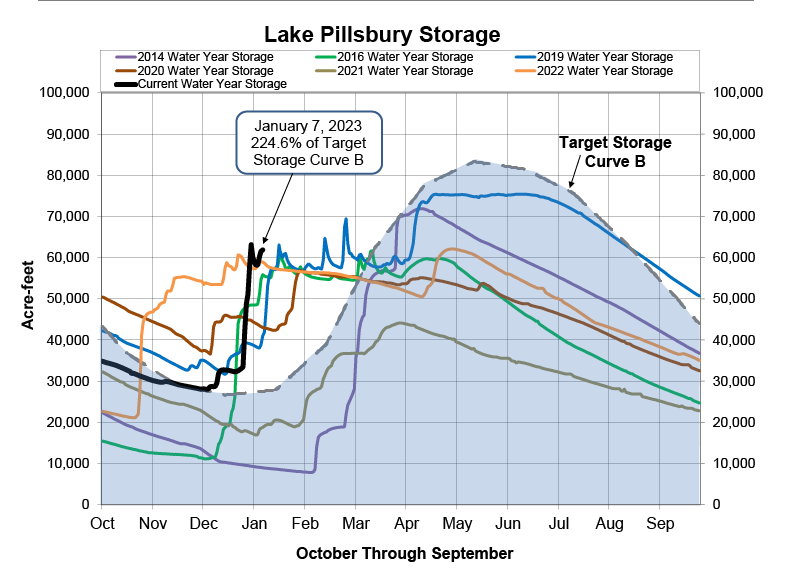
The most up-to-date graphs of Lake Sonoma, Lake Mendocino, and Lake Pillsbury storage. Source: Sonoma Water.
While the recent conveyor belt of storms has caused flashiness in our creeks including some flooding and erosion concerns, there have been breaks in between storm events which have been favorable for allowing at least some of that water to percolate into the depleted groundwater basins.
Our Executive Director, Richard Dale, is similarly optimistic: “At its peak at 6:00 am Monday morning, Verano Avenue bridge had a flow of about 7000 cubic feet per second. In total, Sunday’s night storm of over 2 inches released more water than all human uses for a year here in Sonoma Valley!”
View of Verano Bridge from Monday, January 9 during high flow period.
The important question becomes: how can we make the most out of the abundant water supply from the recent rain throughout the year? Rain capture is a practice that humans have employed for centuries. These techniques are important for regions like ours when the rain comes all in one part of the year.
Some examples of rain capture are roof water catchment systems, like the one we have recently installed at Flowery Elementary School, rain gardens, which are gardens of native plants, shrubs, or perennials that are planted in a shallow basin ideal for capturing and filtering stormwater from rooftops and parking areas, and permeable parking lots, which is a gravel parking area with infiltration features and hollow pavers to allow stormwater to soak in and preventing polluted runoff. Demonstrations of all three of these rain capture techniques can be viewed at Sonoma Garden Park.
Our finished rain harvesting demonstration project at Flowery Elementary School (left) and a video of our rain capture systems at Sonoma Garden Park (right).

